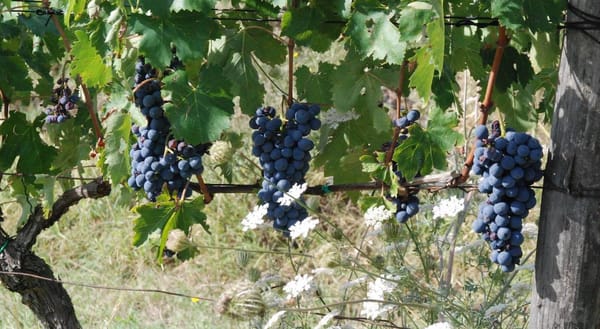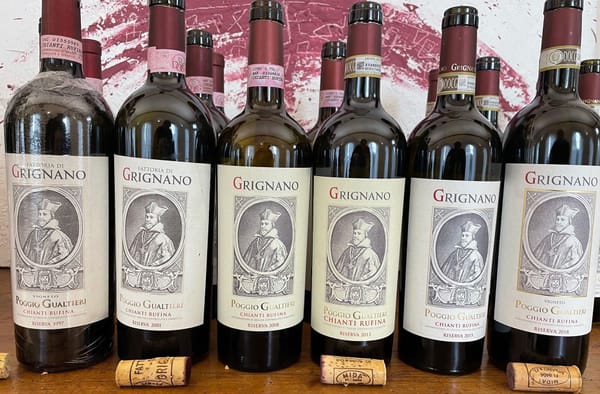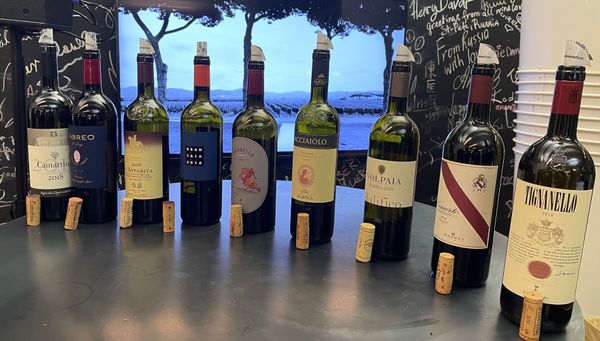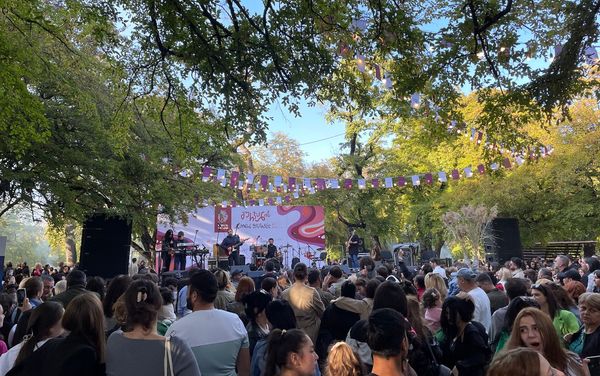🗝️🕸️ From the Cellar: Millennium Riesling still going strong
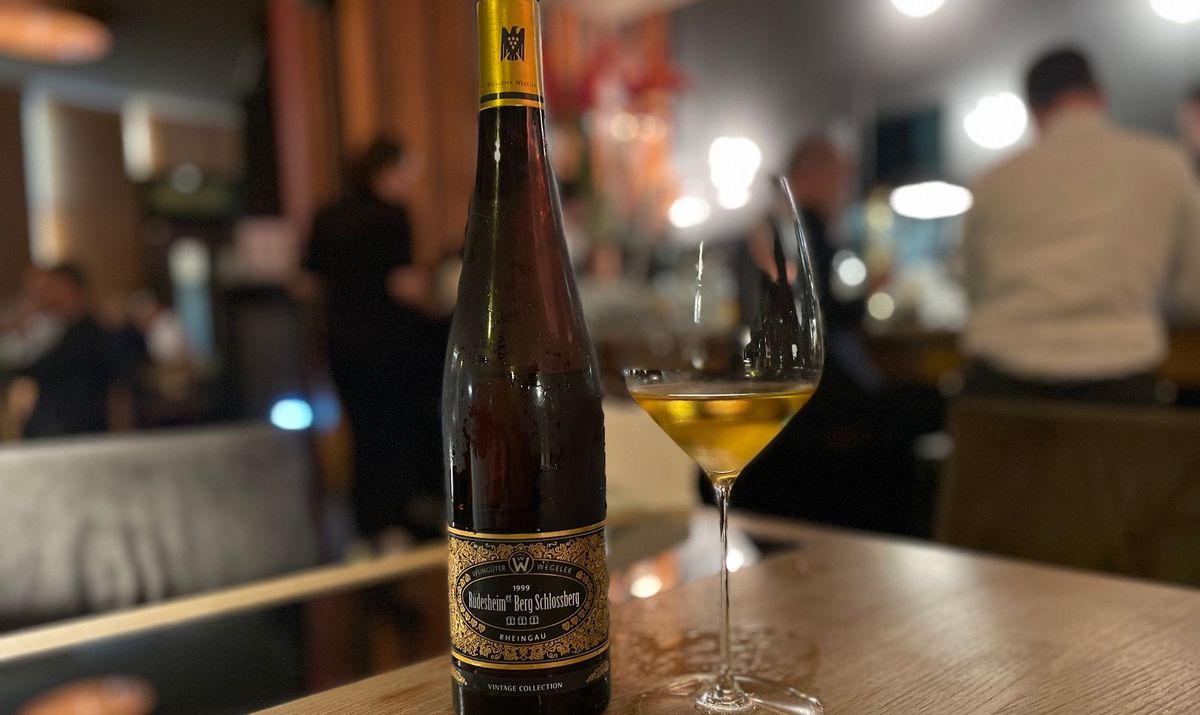
Over the last decade or so I’ve built up a little cellar. It’s full of all sorts of wonderful things, but also plenty of wines that are surely past their best. ‘From the cellar’ is a new idea for a monthly column where I’ll raid the racks in search of interesting wines. Given the amount of travel I’m doing at the moment I’ll probably have to rummage through the collections of others, picking out a few bottles that might deliver something intriguing. The aim isn’t to find the most prestigious wine to show off with, although that could happen; rather, it is to delve into interesting bottles that may or may not have survived the journey.
Frankfurt-am-Main, Germany
I passed through Frankfurt and Wiesbaden a couple of weeks ago, to work my way through over 450 of Germany’s best wines at the VDP’s sneak preview of Grosses Gewächs releases. What a tasting. Needless to say it was organised and carried off with typical German diligence and precision. Managing the mood of over 100 critics and journalists from around the world as they request wines from different regions and varieties, all at different times, all expecting the correct serving temperatures, all with their own quirky requirements and assignment briefs, takes a bit of thought. Full marks though. I’ve seen this kind of ambition descend into chaos further south.
The Rieslings of the Mosel, Rheinhessen, Rheingau and Pfalz made up a substantial portion of the agenda. The theme was exclusively the dry wines of Germany’s VDP Grosse Lage classification, which is sort of the equivalent of the French Grand Cru idea. The wines were also registered as Grosses Gewächs (identifiable through an embossed GG symbol) defining them, in simple terms, as one of the best wines from the best sites in the country. Having been required to follow stricter rules on sugar levels they are essentially bone dry. Sylvaner (mostly brilliant) and Weissburgunder (prettier than people expect) were also included, as well as some Lemburgers (often a bit odd) and a large stable of Spätburgunders (solid) from across the regions.
I’ll be producing a short report with tasting notes and scores in the near future, but suffice to say the wines are generally exceptional. As you’d hope, given that they represent the great and the good of Germany. The wines will be released onto the market from September 1st and mostly hailed from the 2022 vintage, a year of intense summer heat and one that presented growers with the prospect of much riper wines. Contrast came in the form of the reds from the cooler 2021 growing cycle. Such a broad and dense tasting format is more suited to giving a macro picture, an overall sense of the vintage, rather than the the subtleties of site, but is still extremely useful in identifying a winery’s style, or demonstrating regional characteristics.
With the event over and the dining scene in Wiesbaden a little tired and mediocre, I fled back to Frankfurt and holed up at Heimat. Originally a kiosk, then transformed into a jazz club, and now reborn as a restaurant boasting an exceptional wine selection, Heimat offers a relaxed yet sophisticated contemporary take on a 1950s vibe. Perfect for a Sunday night wind down. Anyway, enough of that. What ageing treasure was found?
Much of the conversation at the VDP was about just how young the wines were. Obviously, it was a pre-release tasting, but the intent behind such comment was to highlight the longevity of these wines, particularly the Rieslings. The complexity and minerality that develop over time, combined with layers of entrenched exotic fruit, is what makes the best German whites truly special. My aim then, was to find something with some maturity to it and to remind myself just how such a wine might evolve.
I chose Weingüter Wegeler’s Riesling from the village of Rudesheim in the Rheingau, and more specifically from the Grosse Lage of Berg Schlossberg. I looked it up in the Vinorandum database - it’s from the steepest vineyard in the Rheingau and is a vineyard dominated by quartzite and slate. The vintage? 1999, for around 60 euros. A bargain, surely? I’ve tasted this wine young and remember it well - plenty of citrus, fresh acidity and lots of mineral texture on the palate. Reliably made by a long established producer.
Paired with fois gras, then a range of French cheeses, this 24 year old wine was beautiful. Ethereal, textured, rich and dense, without being cloying or overpowering. The acidity had retreated, leaving a a floor of apricot and nuanced hydrocarbon notes. Trailing behind were the faint scents of dried honeysuckle and beeswax. Further investigation revealed 1999 to be a decent year, particularly for Riesling and particularly for vines planted on the Rheingau’s steeper slopes.
Rapidly tasting hundreds of wines that need time to settle, integrate and evolve can leave one with a false impression. The journey they might go on is obscured. Restaurants and sommeliers that understand how to contextualise older wines for their clientele are a godsend. In an age when wine is under pressure from other drinks categories, when inventory is supposed to be kept low, these enthusiastic merchants of history help preserve the culture and romanticism of wine, and remind us why this far more than just a drink.

